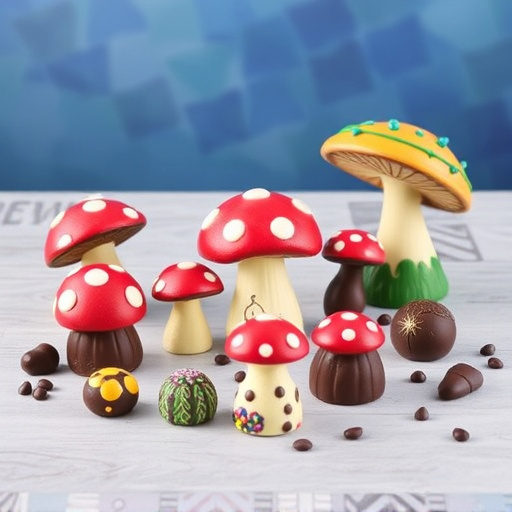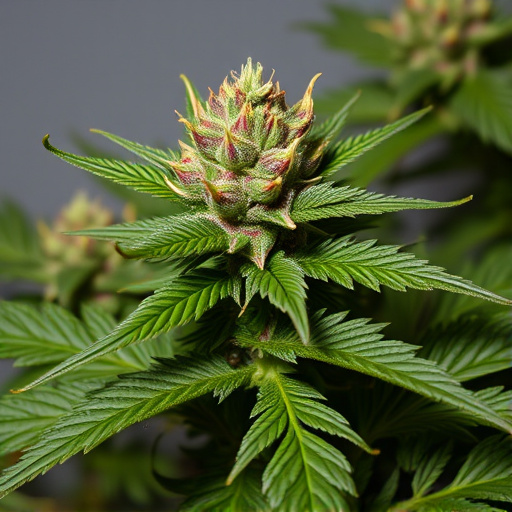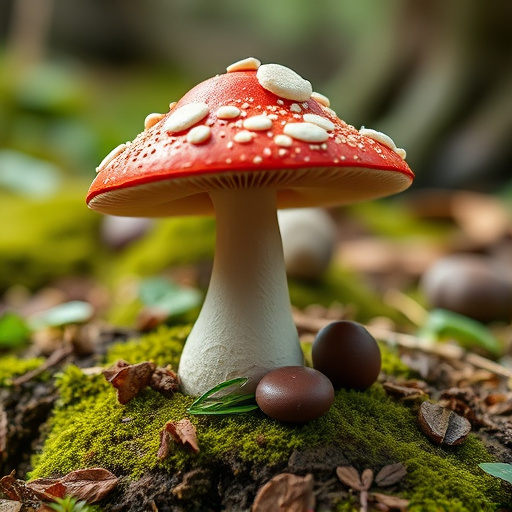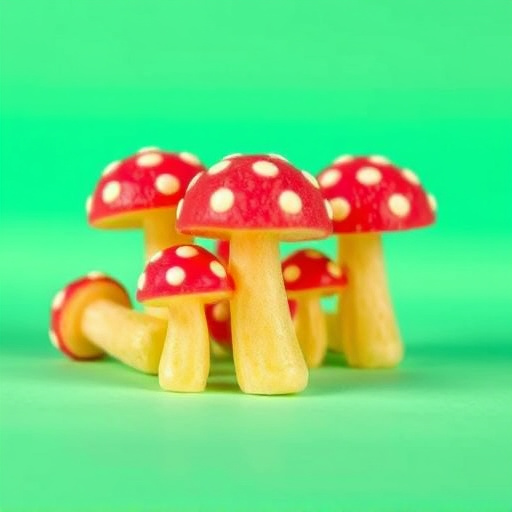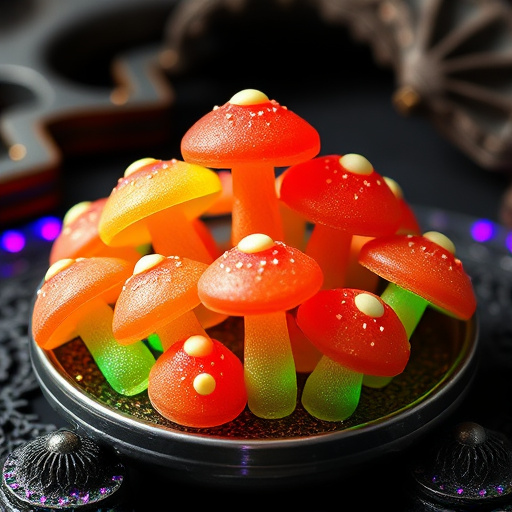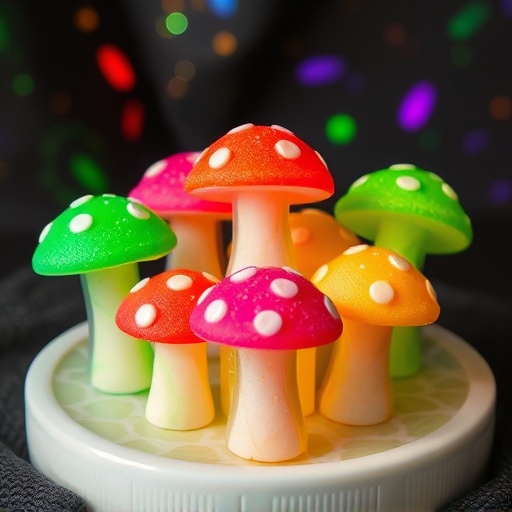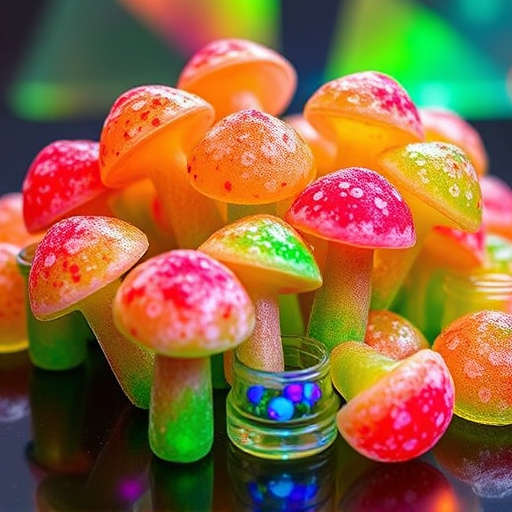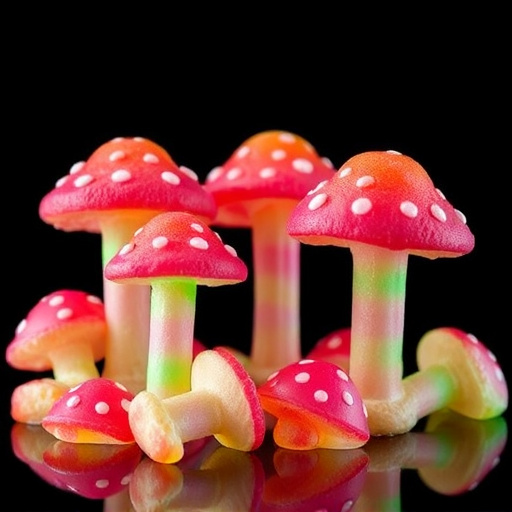The history of magic mushroom gummies is a journey spanning centuries, from indigenous spiritual and medicinal uses to formal scientific study in the 20th century, popularized again by the counterculture movement. After decades of criminalization hampering research, psilocybin therapy is experiencing a renaissance, driving the development of edibles like gummies for treating depression, anxiety, and PTSD. Today, magic mushroom gummies are widely available, backed by positive user experiences, reflecting a growing acceptance of alternative wellness approaches.
Discovering the best psilocybin magic mushroom gummies involves understanding their intriguing history. The evolution of these innovative delivery methods traces back to early explorations of psilocybin’s therapeutic potential, gaining momentum over time. This article delves into the historical perspective of magic mushroom gummies, from their humble beginnings to becoming a popular choice for those seeking mental health support, creativity boosts, and spiritual journeys. Uncover key milestones, explore their benefits, and learn essential factors when selecting these remarkable products, tracing back the history of magic mushroom gummies usage in modern times.
- The Evolution of Magic Mushroom Gummies: A Historical Perspective
- – Trace the origins and early usage of psilocybin gummies
- – Highlight key milestones in their development and popularity growth
The Evolution of Magic Mushroom Gummies: A Historical Perspective
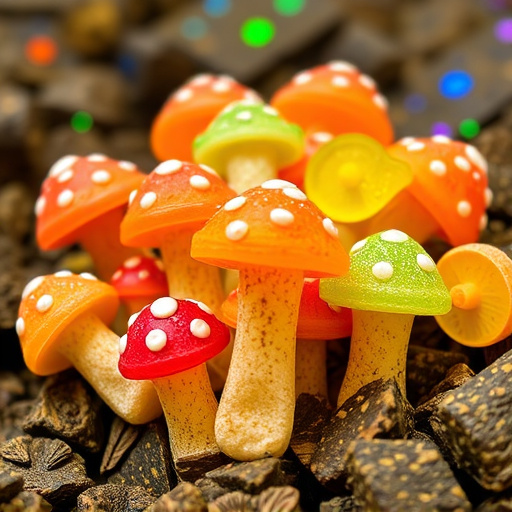
The history of magic mushroom gummies is intertwined with the evolution of psychedelic research and cultural shifts. Historically, magic mushrooms have been used for centuries in various cultures for their spiritual and medicinal properties. However, their formal study didn’t gain momentum until the mid-20th century when researchers began to explore their chemical composition and potential therapeutic benefits. This period saw the extraction of psilocybin, the active compound in magic mushrooms, leading to its use in controlled settings for conditions like depression and anxiety.
As time progressed, the 1960s counterculture movement popularized the recreational use of magic mushrooms, further pushing the boundaries of their perceived social acceptability. However, stringent laws were implemented in many countries, criminalizing psychedelic substances, which effectively halted research and access for most of the 20th century. Today, there’s a renewed interest in psilocybin therapy, with recent studies and legal shifts hinting at a potential future where magic mushroom gummies might be widely available for medicinal purposes, echoing their historical use while navigating modern regulatory landscapes.
– Trace the origins and early usage of psilocybin gummies
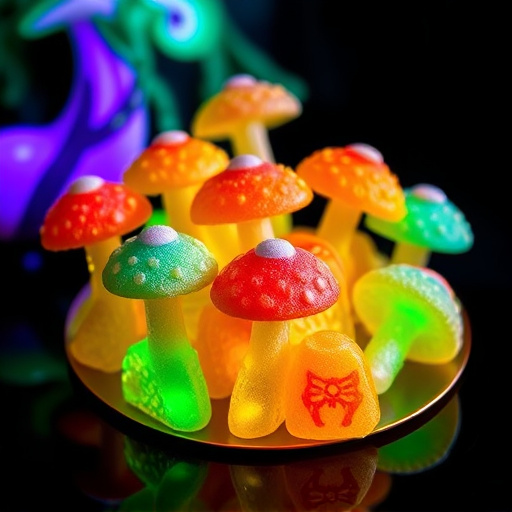
The history of magic mushroom gummies is intertwined with the exploration and evolution of psilocybin, a natural compound found in certain types of mushrooms. These psychedelic substances have been used for centuries by indigenous communities worldwide for their spiritual and medicinal properties. Early records suggest that tribes in Mesoamerica and South America incorporated psilocybin-containing mushrooms into their cultural practices as early as the 16th century.
In modern times, the interest in psilocybin gummies emerged from both a recreational and therapeutic perspective. As research into psychedelic therapy gained momentum in the late 20th century, scientists began to investigate the potential benefits of psilocybin for treating mental health disorders. This renewed interest sparked the development of innovative delivery methods, including edibles like gummies, which offer a more palatable and controlled way to experience psilocybin compared to traditional ingestion of whole mushrooms.
– Highlight key milestones in their development and popularity growth
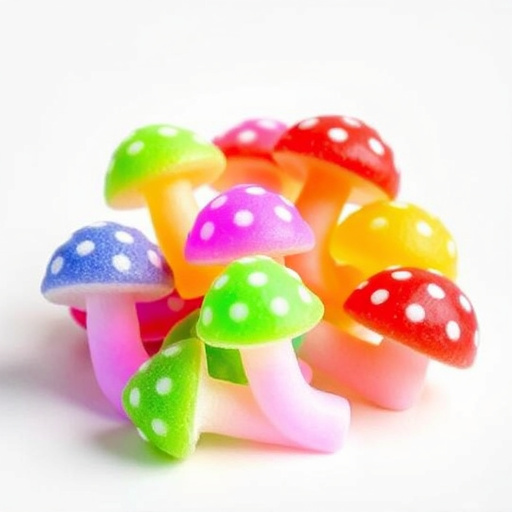
The history of magic mushroom gummies is a fascinating journey that mirrors the evolving perception and legal status of psilocybin mushrooms themselves. Early experimentation with psilocybin dates back to the 1960s, when researchers began studying its effects for therapeutic purposes. However, it wasn’t until the 2010s that there was a resurgence in interest, driven partly by shifts in drug policies and a growing acceptance of psychedelic-assisted therapy. This period saw an increase in research focusing on psilocybin’s potential to treat depression, anxiety, and PTSD, leading to more mainstream discussions about its benefits.
Concurrently, the development of edible forms like gummies gained traction, as they offered a convenient and discrete way to consume psilocybin. The first commercial magic mushroom gummies emerged around 2016, marking a significant milestone in the history of magic mushroom gummy usage. Since then, their popularity has skyrocketed, fueled by positive anecdotal reports from users and growing acceptance within the mental health community. Today, these gummies are available across various strengths and dosages, catering to a diverse range of consumers looking for alternative approaches to well-being.
The history of magic mushroom gummies is a fascinating journey that reflects changing attitudes towards psychedelic exploration. Starting from their early origins, these innovative products have evolved to offer a discrete and palatable way to experience psilocybin. As interest in psychedelic therapy continues to grow, the demand for accessible and safe options like gummy candies is rising. By understanding the evolution of magic mushroom gummies, we can appreciate both their cultural significance and their potential role in shaping the future of mental health treatments.


